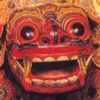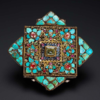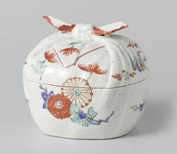A SUCCESSFUL round of auctions was completed in Hong Kong just as we were preparing to go to press. This season saw exceptional results for Chinese paintings. For example, the sale of Wood and Rock by Su Shi for HK$464 million (US$60 million) set a new record for Christie’s in Asia. In addition, the strong public turnout for major art exhibitions bears testament to Hong Kong’s position as a global art centre. I am confident that interest in Asian art will continue to grow during the coming year with a number of spectacular new museum and gallery shows opening around the world.
For the January–February 2019 issue we have prepared articles on three major exhibitions: “Empresses of China’s Forbidden City” in the US, “A Millennium of Monochromes from the Great Tang to the High Qing: The Baur and the Zhuyuetang Collections” at the Baur Foundation in Geneva, and “Goryeo: The Glory of Korea” at the National Museum of Korea in Seoul. I hope that these articles will be of interest to our readers, and possibly inspire a visit to one of these impressive exhibitions.
Coinciding with the 40th anniversary of the establishment of US-China diplomatic relations, “Empresses of China’s Forbidden City” is the first international exhibition to explore the role of empresses in the Qing dynasty. Organised by the Peabody Essex Museum (PEM) of Salem, Massachusetts, the Smithsonian’s Freer Gallery of Art and Arthur M. Sackler Gallery (FreerlSackler) in Washington, DC, and the Palace Museum, Beijing, approximately 200 spectacular artworks from the Forbidden City tell the little-known stories of how the empresses engaged with, and influenced, court politics, art and religion. This exhibition provides a unique opportunity to see rare treasures that have never before been on public display. The PEM will host the exhibition until February 10th, after which it will be on view at the FreerlSackler from March 30th to June 23rd, 2019.
The exhibition was conceived by Jan Stuart, the Melvin R. Seiden Curator of Chinese Art at the FreerlSackler, and Daisy Yiyou Wang, PEM’s Robert N. Shapiro Curator of Chinese and East Asian Art, who travelled regularly over four years to the Forbidden City to investigate the largely hidden world of the women inside. Delving into the vast imperial archives and collections, their research reveals how these royal women influenced history, as well as the spectacular art made for, by and about them.
Shan Jixiang, Director of the Palace Museum, said: “This exhibition establishes a new model for future international research and museum collaborations”. Daisy Yiyou Wang added: “We are very proud to reclaim the presence and influence of these empresses, about whom history has largely been silent. The exquisite objects related to the empresses give us a better understanding of these intriguing women. Further evidence found in court archives and other historical sources helps illuminate their hidden, but inspiring lives.” Jan Stuart also explained: “The study of women in history is exciting, timely and necessary. By focusing on the material and spiritual world of these women, we begin to fill in details absent from previous accounts of women in Chinese history. To the extent that the empresses’ experience of the expectations and constraints finds an echo in our own world, we hope this exhibition will prompt broader reflection on the position of women in society and fosters a sense of commonality and connection across time and cultures.”

A 264-page accompanying catalogue published by the PEM and FreerlSackler, and distributed by Yale University Press, offers compelling insights into the material culture, activities and living spaces of Qing empresses. This lavishly illustrated book features over 100 spectacular works of art from the Palace Museum in Beijing.
Prof. Josh Yiu, Director of the Art Museum, The Chinese University of Hong Kong, is pleased to announce that the museum’s exhibition, “For Blessings and Guidance: The Qianlong Emperor’s Design for State Sacrificial Vessels”, will open on January 25th, 2019. He stated: “With significant donations from Dr Iain Clark and Mr Anthony Cheung of Huaihaitang in recent months, the Art Museum now boasts the largest repository of Qing ritual vessels outside of the Palace Museum”. Made primarily of glazed porcelains after ancient bronzes, Qing ritual vessels have been overlooked by ceramics experts and bronze specialists. However, these objects were of the utmost significance in activating state rituals during the Qing dynasty. The Qianlong emperor decided to standardise the forms of these objects to ensure that the rites were performed properly. This fascinating exhibition investigates the production and function of this distinct group of objects. I look forward to visiting the Art Museum again for this show, which runs until mid-May 2019.
Finally, I would like to thank all of the authors, advertisers, friends and contributing editors for their considerable support over the last twelve months. Of course, I would also like to wish all our readers good health and happiness throughout the coming New Year.

Please click here to view the contents of this issue.

 Subscribe
Subscribe Calendar
Calendar Links
Links Gift
Gift


